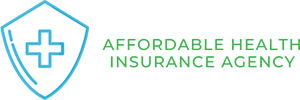Imagine stepping into a maze of health insurance options, searching for the most affordable path to coverage. Don’t worry, we’ve got your back. In this guide, we’ll navigate you through the twists and turns of the health insurance landscape, helping you find the best options for your budget. From understanding different plans to exploring government-sponsored programs, we’ll equip you with the knowledge to make informed decisions. Get ready to conquer the maze and secure affordable health insurance that fits your needs.
Factors to Consider When Choosing Health Insurance
When choosing health insurance, you should consider various factors. One important factor to consider when selecting a health insurance plan is understanding health insurance deductibles and copayments. Deductibles are the amount of money you must pay out of pocket before your insurance coverage kicks in. It’s important to know the amount of the deductible and if it applies to both individual and family coverage. Copayments, on the other hand, are the fixed amounts that you pay for medical services or prescriptions. You should understand what services or medications require copayments and how much you will need to pay. Additionally, it’s important to consider the network of healthcare providers and facilities that are covered by the insurance plan. By considering these factors, you can make an informed decision when choosing a health insurance plan.
Understanding the Different Types of Health Insurance Plans
Now let’s talk about the different types of health insurance plans. Understanding the coverage and costs of each plan is important when making your decision. You want to choose the right plan that meets your needs and budget.
Plan Coverage and Costs
As you explore different health insurance plans, it is important to understand the coverage and costs associated with each option. One way to compare plans is by looking at their plan limitations and out-of-pocket expenses. Plan limitations refer to the restrictions or exclusions in the coverage, such as certain treatments or medications not being covered. Out-of-pocket expenses, on the other hand, are the costs that you have to pay yourself, such as deductibles, copayments, and coinsurance. To help you better understand these factors, here is a table summarizing the coverage and costs of different health insurance plans:
| Health Insurance Plan | Plan Limitations | Out-of-pocket Expenses |
|---|---|---|
| HMO | Limited provider network | Low copayments, no deductibles |
| PPO | Freedom to see any provider | Higher deductibles, coinsurance |
| EPO | Limited provider network | Moderate copayments, no deductibles |
Choosing the Right Plan
To choose the right health insurance plan, you should understand the different types of health insurance plans available. There are several factors to consider when making this decision. First, you need to assess your healthcare needs and determine what level of coverage you require. Consider factors such as your age, pre-existing conditions, and any anticipated medical expenses. Next, you should evaluate the costs associated with each plan. This includes premiums, deductibles, copayments, and out-of-pocket maximums. It’s important to strike a balance between plan coverage and costs. While a plan with comprehensive coverage may offer peace of mind, it may also come with higher premiums. Conversely, a plan with lower costs may have limited coverage options. Take the time to compare and understand the different types of health insurance plans available to make an informed decision.
Exploring Government-Sponsored Health Insurance Programs
You can explore various government-sponsored health insurance programs to find affordable coverage options. Here are four options you should consider:
-
Medicaid: This program provides health coverage for low-income individuals and families. Eligibility requirements vary by state, but generally, you must have a low income and meet certain criteria, such as being pregnant, having a disability, or being a parent.
-
Children’s Health Insurance Program (CHIP): CHIP offers low-cost or free health coverage for children in families that earn too much to qualify for Medicaid but cannot afford private insurance. Eligibility requirements also vary by state, but typically, children must be under a certain age and meet income guidelines.
-
Medicare: This program provides health coverage for individuals aged 65 and older, as well as certain younger individuals with disabilities. Eligibility requirements are based on age and disability status.
-
Affordable Care Act (ACA) Marketplace: The ACA Marketplace offers health insurance plans to individuals and families who do not qualify for Medicaid or Medicare. Eligibility requirements are based on income and citizenship or immigration status.
Exploring these government-sponsored health insurance programs can help you find the affordable coverage you need.
Affordable Health Insurance Options for Self-Employed Individuals
Finding affordable health insurance options can be challenging for self-employed individuals, but there are several options available to consider. As a freelancer, you have unique needs and requirements when it comes to health insurance. Here are some strategies for finding affordable health insurance as a small business owner:
| Option | Description | Pros | Cons |
|---|---|---|---|
| Health Insurance Marketplace | A platform where you can compare and purchase health insurance plans. | Wide range of plans to choose from, potential for subsidies based on income. | Limited enrollment periods, may not offer plans specific to your needs. |
| Professional Associations | Joining a professional association that offers group health insurance plans. | Access to group rates, potential for customization. | Limited to specific professions, may require membership fees. |
| Health Savings Account (HSA) | A tax-advantaged savings account to be used for medical expenses. | Contributions are tax-deductible, funds can be rolled over from year to year. | High deductible plans required, limited to certain expenses. |
How to Find Cost-Effective Health Insurance as an Unemployed Individual
If you’re currently unemployed, exploring government programs and private marketplaces are cost-effective health insurance options. Here are four ways to find affordable health insurance as an unemployed individual:
-
Medicaid: Medicaid is a government program that provides free or low-cost health insurance to low-income individuals and families. Eligibility requirements vary by state, so check with your local Medicaid office to see if you qualify.
-
Marketplace plans: The Affordable Care Act created marketplaces where individuals can compare and purchase health insurance plans. You may be eligible for subsidies that can lower your monthly premiums and out-of-pocket costs.
-
COBRA coverage: If you recently lost your job, you may be able to continue your employer-sponsored health insurance through COBRA. However, keep in mind that you’ll be responsible for the full premium amount.
-
Short-term health insurance: Short-term health insurance plans provide temporary coverage for individuals in between jobs. While these plans may not offer comprehensive coverage, they can provide a safety net until you find a more permanent solution.
Tips for Saving Money on Health Insurance Premiums
If you want to save money on health insurance premiums, there are a few key points to keep in mind. First, compare plan coverage to make sure you’re getting the best value for your money. Second, take advantage of preventative care services that are often covered at no additional cost. Lastly, explore government subsidies that may be available to help lower your monthly premium payments. By considering these points, you can find ways to save on your health insurance costs.
Comparing Plan Coverage
When comparing plan coverage, you can save money on health insurance premiums. Here are some tips to help you evaluate plan limitations and compare out-of-pocket expenses:
-
Consider the deductible: Look for a plan with a lower deductible, as this is the amount you’ll have to pay before your insurance kicks in. A higher deductible can mean lower premiums, but it also means you’ll have to pay more out of pocket before your coverage starts.
-
Look at copayments and coinsurance: Copayments are fixed amounts you pay for specific services, while coinsurance is a percentage of the cost that you’ll be responsible for. Compare these costs across different plans to see which one offers the most affordable options for the services you use most frequently.
-
Review the network: Make sure the plan you choose includes your preferred healthcare providers in its network. Going out-of-network can result in higher out-of-pocket costs.
-
Examine prescription drug coverage: If you take prescription medications regularly, pay attention to the plan’s coverage for prescription drugs. Look for plans that have a formulary that includes your medications and offers affordable copayments or coinsurance for them.
Utilizing Preventative Care
By taking advantage of preventative care services, you can save money on your health insurance premiums. Prevention strategies and cost-effective healthcare options not only help you maintain good health but also reduce the need for expensive medical treatments in the long run. Here are some tips for utilizing preventative care and saving money on your health insurance premiums:
| Preventions Strategies | Cost-Effective Healthcare Options |
|---|---|
| Regular check-ups | Generic medications |
| Vaccinations | Telemedicine services |
| Screenings | Health and wellness programs |
| Healthy lifestyle | Preventive screenings |
| Health education | Chronic disease management |
Exploring Government Subsidies
To save money on your health insurance premiums, explore government subsidies that may be available to you. Here are four tips to help you navigate the world of government subsidies and maximize your savings:
-
Determine your income eligibility: Government subsidies are typically based on your income level. Check if you meet the income requirements for programs like Medicaid or the Children’s Health Insurance Program (CHIP). These programs can provide significant savings on your health insurance premiums.
-
Research the Affordable Care Act (ACA): The ACA offers subsidies to individuals and families with moderate incomes. Use the ACA’s online marketplace to compare plans and see if you qualify for premium tax credits or cost-sharing reductions.
-
Look into state-specific programs: Some states offer additional subsidies or assistance programs for low-income individuals and families. Check with your state’s health department or insurance exchange to see what options are available to you.
-
Seek professional guidance: Navigating government subsidies can be complex. Consider reaching out to a certified health insurance broker or an enrollment counselor who can help you understand your eligibility and guide you through the application process.
Evaluating Additional Coverage Options for Affordable Healthcare
Consider the various additional coverage options available to you for affordable healthcare. When evaluating affordability, it’s important to explore options beyond the basic health insurance plans. One option to consider is a health savings account (HSA), which allows you to set aside pre-tax funds for medical expenses. This can help you save money on taxes while also providing a way to pay for healthcare expenses. Another option is supplemental insurance, which can provide coverage for services not covered by your primary health insurance plan, such as dental or vision care. Additionally, some employers offer wellness programs that provide incentives for maintaining a healthy lifestyle, which can lead to reduced healthcare costs. By exploring these additional coverage options, you can find ways to make your healthcare more affordable and ensure you have the coverage you need.












